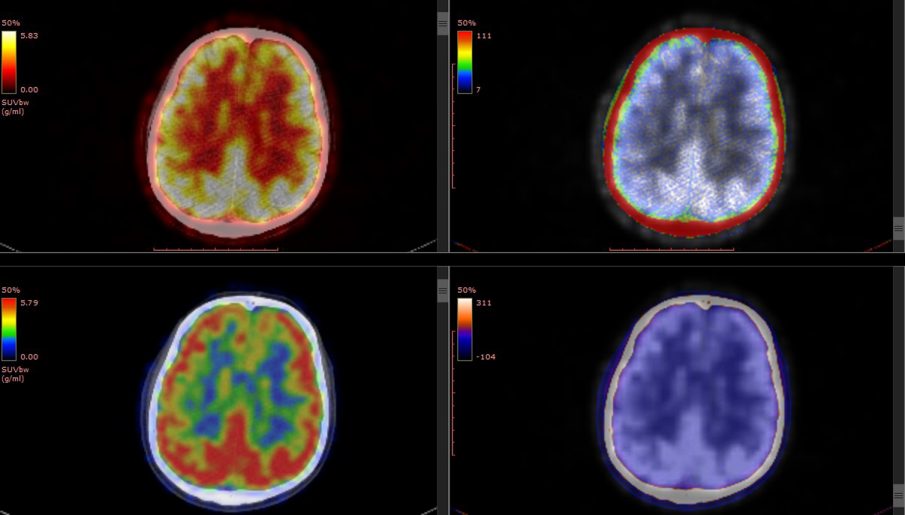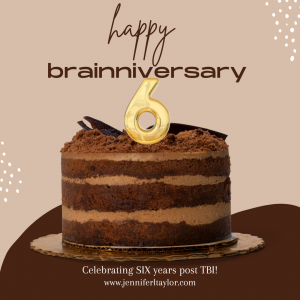PET scan overview
I had my first-ever PET scan recently and am sharing my experience so that others may know what to expect. My PET scan had a different protocol since they were specifically looking at the functioning of a certain area of the brain. This protocol is different than if they were looking for something else, a tumor for example. The article explains the protocol for a PET scan for a person with a brain injury and a malfunction in the brain causing epilepsy. My neurologist ordered a PET scan with contrast IV injection for a specific part of the brain. Note, I am not a medical professional nor am I stating medical advice—I’m simply summarizing my own experience. For those like me who had never had a PET scan before, I describe in this article in detail my experience, so you know what to expect—especially important for those who tend to suffer from anxiety.
Living mindfully keeps the mind from racing
Living in the present moment means capturing how I feel at that moment. I’ve been waiting in a way for this morning’s PET scan for just shy of five years—even if unintentionally. You see, my accident and injury was in January 2017, and ever since then I’ve been attempting to figure out how to repair the brain and pinpoint the exact areas affected by the impact. In September, my new neurologist recommended the test and finally ordered it. Some people obsess on a thing before it becomes a real thing in their lives. That’s called anxiety. One can’t be anxious if one focuses on the present point in time. For those of you who aren’t mindful living practitioners, you might be doubting what I just said or think I’m a whack job with her head in the clouds. Not so! When you live “in the moment”, you truly experience life as it occurs. This limits the distortion of reality too. So here I am, checked in and waiting to be called back. Living mindfully means the mind doesn’t get caught up in the endless “what if” cycle.
Anticipation of the PET scan begins to set in
I am human, so as the scan neared, anticipation began to creep in. When it did creep in, I managed it with mindfulness. Two nights before the scan, I was talking about the PET scan and the restrictions in advance of the scan. Talking about the restrictions put the scan in the forefront of my mind and I naturally began to feel some anticipation. Logically I knew the brain was having some issues so going into a test with this knowledge isn’t as stressful as going into a test knowing there’s something not right and going down what I call the 3W rabbit hole (wondering/waiting/worrying). Immediately I began to feel the tension and anxiety, so I reviewed the notes and decided I had communicated what the listener needed to know, and I changed the subject completely and moved on. This conscious tactic allowed me to stay in the moment and push away any tension or anxiety that might have ensued had I followed that emotion of anticipation. I wasn’t going to allow my mind to produce unwarranted thoughts of what-if scenarios. The results would produce the reality of the situation regardless if I permitted myself to wonder and worry while I waited, so I used my discipline to stay in the present moment.
Preparation and restrictions before a PET scan
A PET scan isn’t like an x-ray, CT, or MRI in which you just show up. The restrictions included:
- Eat a high-protein and low-carb dinner the night before
- Strenuous exercise prohibited 24 hours before the scan
- No solid food within six hours of the scan
- Drink water only the morning of the scan
- No candy, gum, mints, or cough syrup 24 hours prior to the scan
- No metal allowed on clothing, so I was to wear “sweatpants and sweatshirt”—my yoga pants and top with built-in bra under my comfy sweatshirt worked nicely
How the PET scan works
The radioactive sugar, or tracers, injected into the body attach differently to various parts of the brain which is why the test requires abstaining from sugar prior to the scan. They only want the sugar from the injection in the bloodstream. With these radioactive tracers, the PET scan detects which areas of the brain utilize sugar at the highest levels. This allows the medical team to review the scan and detect how the brain is functioning and also pinpoints any abnormalities. The scanner rotates around the body and captures images of where the brain is using glucose (sugar). On a note of interest only, malignant tumor cells show up brighter in images because they are more active and utilize more glucose than normal cells.
Arrival and PET scan prep process
When I arrived, I reserved the requisite half hour to resolve the check-in procedure and paperwork, even though I pre-registered online. I waited 10-15 minutes after completing the check-in process. The tech retrieved me at 9:48 AM and took me to a mobile PET scan unit next to the building. Inside the mobile unit, the right side was set up with an oversized, motorized recliner adorned in a sterile sheet. On either side was a table set up for the IV injection. The first tech set things up for the tech who would insert the IV, inject the contrast, and later the sugar water mixture. There is a specific timing of all of this too.
Injecting the radioactive tracer
The first tech directed me to the recliner area where I quickly learned I would not be permitted to think or listen to anything. This particular tested required darkness and stillness so that my brain would be in a restful state. The radiology tech did the usual, checking my veins and allowed me to choose which arm and quickly inserted the IV. Then, the radiology tech tested my blood. The next step the radio tech injected the contrast of radioactive tracers into my IV. Immediately, I felt a headache. Note, I am sensitive to headaches and was even as a young child so not sure that it’s a common side effect. Before the injections, the radiology tech (RT) explained the process including explaining to me the importance of the quiet and dark environment and comfy chair. When I told them it was different than what I was told, the RT further explained that this particular test is different than a standard PET scan in that they want to see the activity levels of the brain in rest and relaxed so the instructions to bring a book to read went by the wayside and I understood.
Quiet time begins
I was entering nap time or meditation and was glad to have some quiet time. The RT explained that once he injected the contrast, there would be a set time where I wouldn’t communicate with them and they with me. Then, he instructed me he would return to give me the sugar and water injection. Then, I would rest quietly waiting for the radioactive material to absorb into my system. In all these visits, I was not to speak to them, and they were not going to speak to me. When they did, the duo used hushed voices.
Get comfy
The RT ensured I was comfortable in the recliner before they left me to relax. Since I was not quite nine weeks post op from hip scope surgery, they gave me a pillow to place under my hips and then wrapped me in warm blankets. The RT then adjusted the motorized recliner to my desired position and exited the little room turning the lights off behind him. I did not time any thing officially. I followed the procedural requirements—after all, this PET scan is expensive and required a strict diet prior to the test so I wasn’t going to do something trivial to jeopardize the quality of the scan. I laid back, shut my eyes, and began to shut everything out of my brain. I began to meditate on stillness and breathing. I dozed a little here and there. The RT quietly slipped in and out of the room administering the sugar water injection without a word.
Time for the actual PET scan
When the time ended and I was primed and prepped for the scan, both the initial tech and the RT entered the room and took me to the larger room where the PET scan equipment was located. There was a narrow, flat sliding table draped with a sterile sheet with a cut-out for the head. The team indicated for me to put my head in the designated area, whispered for me to remove my visor and mask. When I was flat on my back, the RT took the blankets and gently covered me up again and tucked me into the machine with minimal instructions. With no previous knowledge, I expected the same loud noises as an MRI scan. I closed my eyes, put my hands and arms in a comfortable position for the duration, and relaxed into my new surroundings.
Whispered escort
The duo exited the room quietly and the table slowly moved me closer to the machine. At first, the table stopped so that the edge of the equipment was at my forehead. There was minimal sound coming from the machine and I wondered if the entire scan would be from this position and location. After a few minutes, no more than five, the table moved me into the unit, which was similar to an MRI capsule. I kept my eyes closed for most of the scan. When I did open my eyes, the lighting was not obtrusive like other diagnostic tests. Since it was more relaxing for me, I did prefer to keep my eyes closed. The goal of the testing time was for me to be relaxed so I returned to that meditative and relaxed state of being. I take “brain breaks” during most days for 20 minutes to rest my brain and let it recharge. It’s like the CTRL+ALT+DEL (control+alt+delete) function of a PC to reboot the machine and clear out minor glitches. I mention this here because after nearly five years of these “brain breaks”, I am a pretty good judge of 20 minutes in a restful state. You may remember, the RT told me the scan would be just ten minutes. The scan itself was more like 20.
What do you hear in a PET scan?
Fortunately, the PET scan machine is so much quieter and not obnoxious like the MRI scans. I heard a high-pitched but soft whir of a machine, which fluctuated. For the duration of the scan, I heard a louder humming noise that reminded me of an air conditioner compressor blowing at three-fourths power. I questioned whether the noise level matched the noise of a microwave vent on high and concluded it was not this loud. The humming noise of the motor was not so loud it bothered me; it was consistent throughout the scan. The soft, high-pitched whirring was not so high pitched that it hurt my ears. It was so soft that it was almost comforting. It certainly wasn’t screeching. For those of us with brain injuries, you know why me talking about the sounds is important to our tender ears and the brightness of lights to our sensitive eyes.
Time lapse of PET scan appointment
Between the two injections, I believe the wait period was between 45 minutes and 55 minutes. The RT told me initially the actual scan in the machine would be ten minutes. The scheduler told me to plan one and a half to two hours plus the check-in time for a total of 2 ½ hours at the appointment. I was there two hours total including the check-in process. By my calculation, I was back in the mobile unit 1 ¾ hours; approximately 20 minutes for the actual scan which left approximately 85 minutes for the intake, IV, and both injections and corresponding wait times.
Summary of my PET scan experience
Of all the procedures and tests I've endured, this procedure was so easy and relaxing. My neurologist ordered this test after my epilepsy monitoring unit study which indicated malfunction in the brain. With no prior knowledge, I went into the appointment thinking it would be loud like an MRI. Instead of getting worked up about the horrible screeching noise I would have to endure, I told my brain, “This test could be different.” With this approach and mental fortitude, I arrived with an open mind. When they finally explained to me how they prep for this particular test and want the brain to be relaxed as possible, I easily and quickly welcomed that and stepped into my meditative state. Who doesn’t want more time to relax?
I closed my eyes and embraced the quiet time. There was no pain involved in the injection or the waiting period. The test itself was mostly quiet with sounds you would hear in everyday life. Had I known this information prior, I would have been able to approach it like I was going in for a scheduled nap. If you’re going in for your first PET scan, rest assured, the volume level of the test is so minor compared to an MRI, and you can easily take a nap or at least doze in and out of sleep if you allow yourself.
Don’t work yourself up about your appointment because it’s nothing like a noisy and obnoxious MRI. Most of the time we allow ourselves to get worked up over the unknown and when we experience that which was previously unknown, we discover that it was nothing quite like we imagined. So, take this from my experience, the PET scan can be a very relaxing experience. If you’re going in for one, relax. Don’t allow your mind to wander or ruminate. Just think of it as a scheduled nap or relaxation time. Take advantage of some scheduled down time.
Be well. Live fully. Love big. Practice loving kindness.







